Seasoning cast iron skillets doesn’t have to be intimidating! If you’ve ever wondered just how do I season a cast iron frying pan, look no further. In 5 easy steps, you’ll have a beautifully seasoned nonstick cast iron skillet for all your favorite meals.
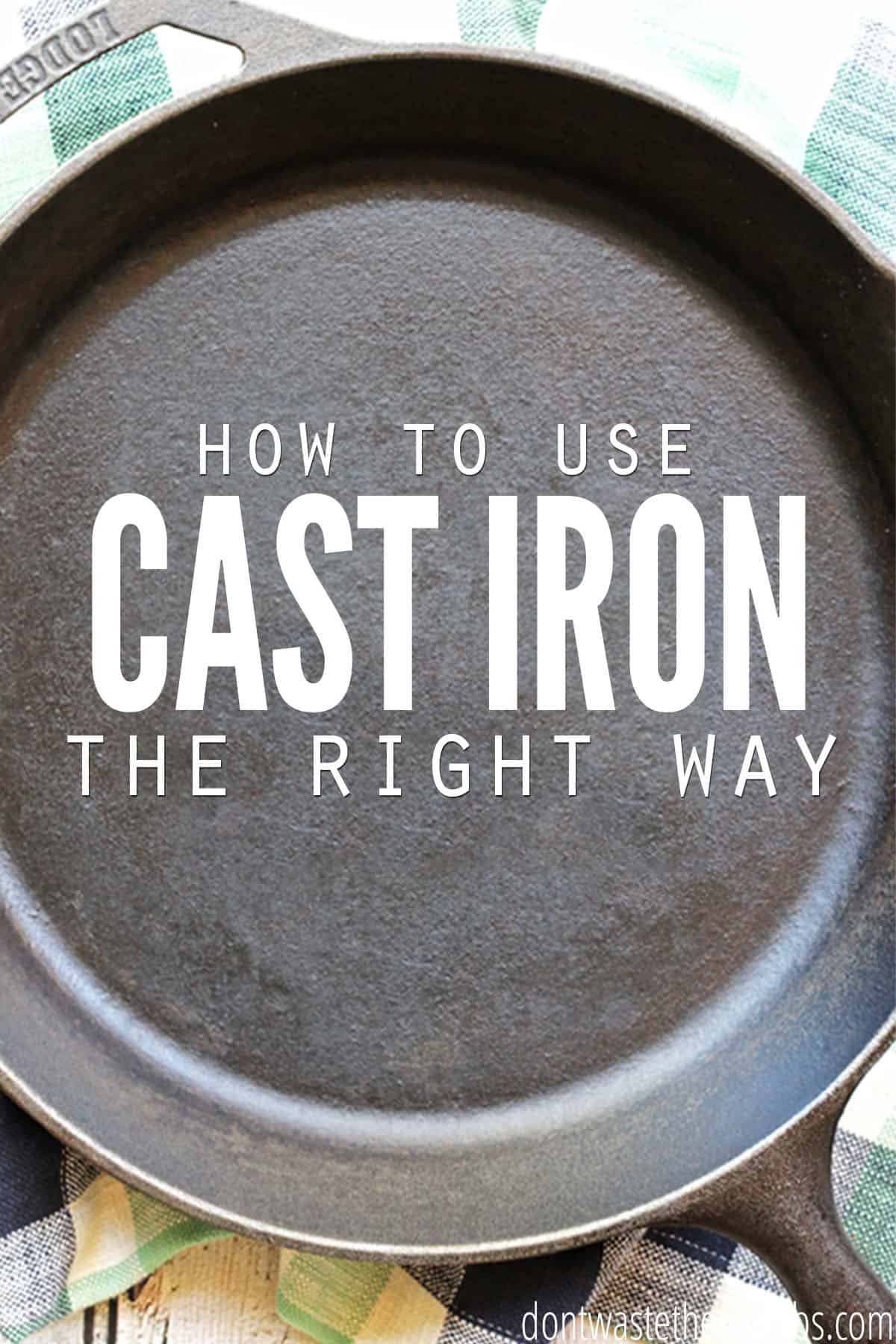
I love cooking in cast iron skillets!
I could gush about the depth of flavor. I could go on and on about the perfect sear that it gives vegetables and meats.
And I’d love to show you how easy it is to clean up after cooking. But first things first: seasoning cast iron is a must before you cook anything!
Why do you even need to know how to season cast iron cookware?
We’re not talking about salt and pepper here. The seasoning process for cast iron is the way you get your skillet to do amazing things every time you cook (sear, flavor, easy to clean, etc.) without food sticking to the pan. And that magic happens with fat.
HOW TO SEASON CAST IRON COOKWARE STEP BY STEP
If you’re new to the cast iron world, or your old skillet could use a pick-me-up, and you’ve ever wondered “How do I season an iron skillet?”, you’re in the right place! In just 5 easy steps, you’ll be an expert at seasoning cast iron.
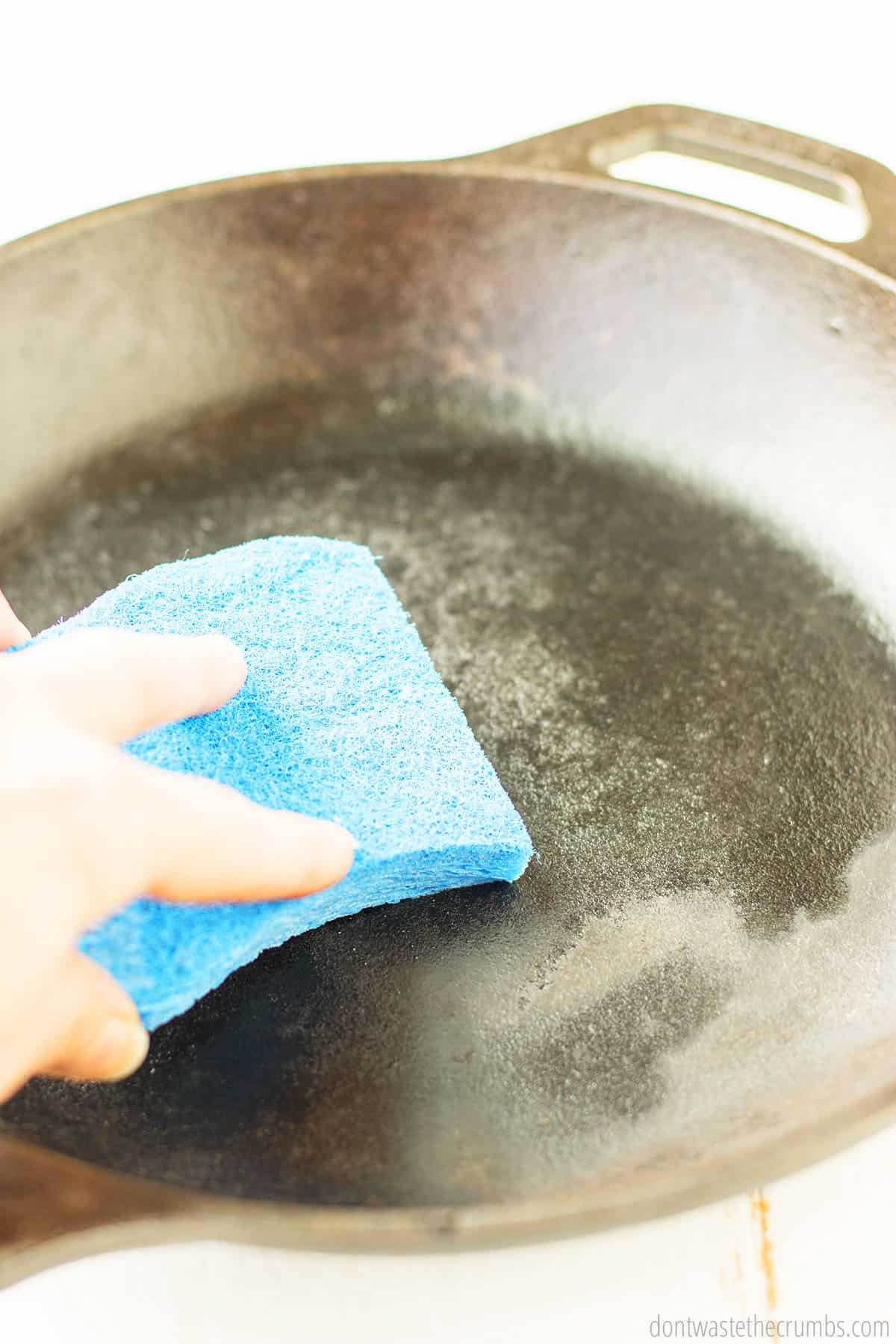
STEP 1. WASH YOUR SKILLET
If you are using a brand new pan OR a new-to-you cast iron skillet, gently scrub your skillet clean with warm soapy water. You don’t need to do this if you’ve owned your cast-iron pan for a while, and there’s even a good chance you’ll never use dish soap again.
Psst – If you’re just bringing your skillet out from the depths of the pots and pans drawer, you can skip this step.
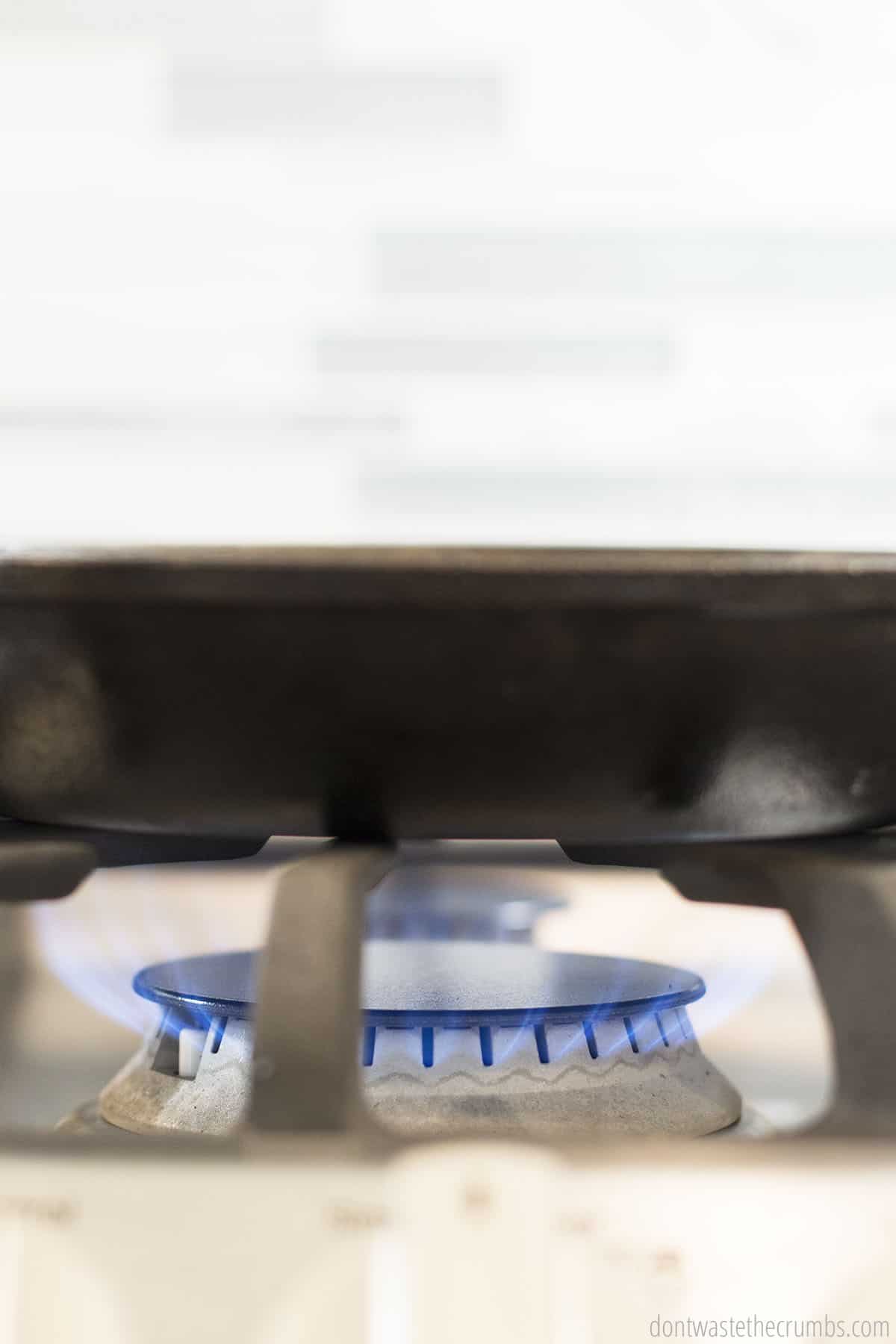
STEP 2. DRY YOUR SKILLET VERY WELL
- Your clean cast iron skillet needs to be 200% dry (that’s not a typo!) every time it gets wet, including this first time, because you want to avoid long-term moisture. The skillet is made of iron after all, and iron + moisture = rust.
- I like to put mine on top of my stove and turn the heat on medium-low until I can no longer visibly see water on the surface. Turn the heat off and let it cool before handling.
- Some people might use the oven, but I like the stovetop because it’s quick and easy. Plus, having it in plain sight means I won’t forget about it later.
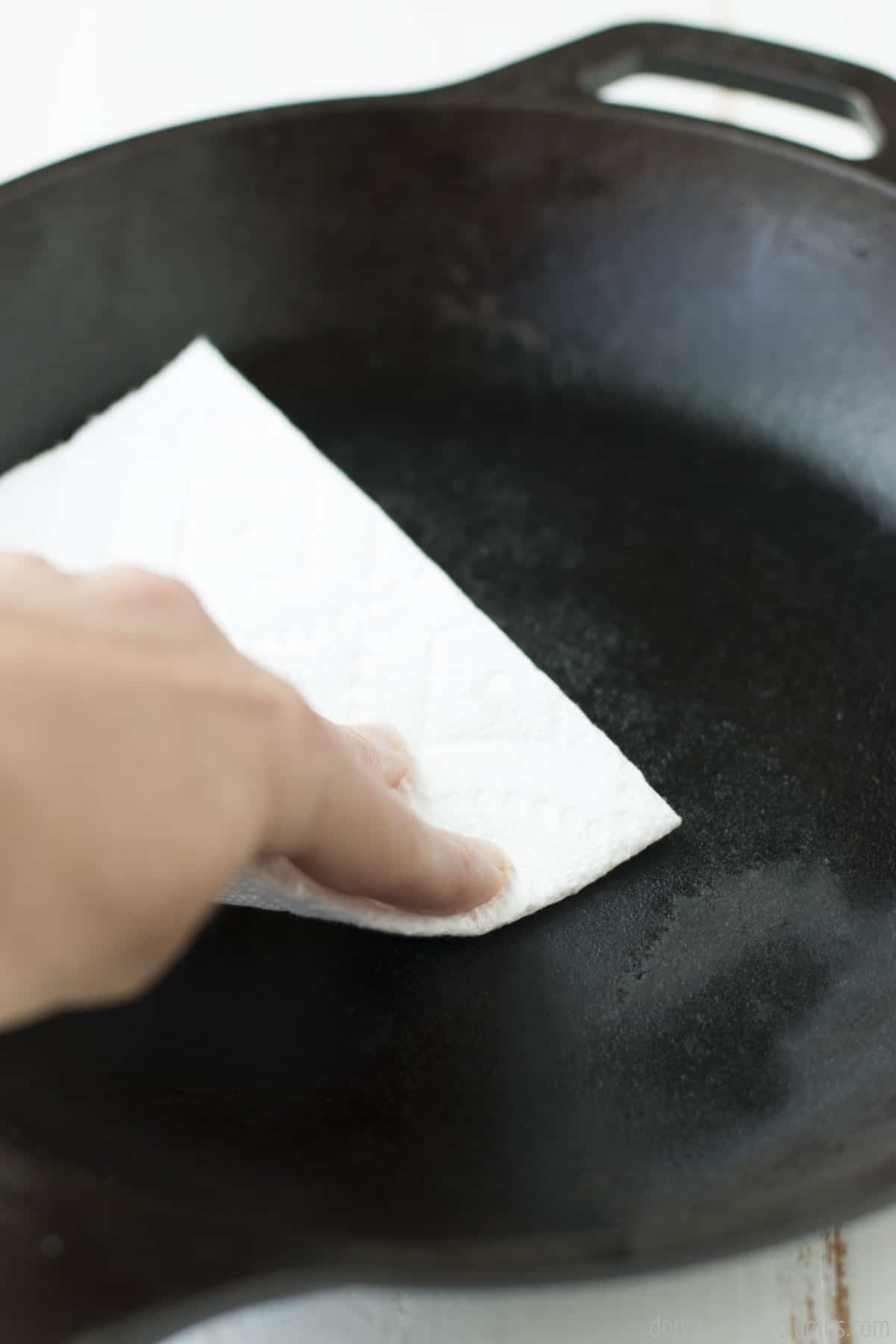
STEP 3. GREASE YOUR CAST IRON SKILLET
- While your skillet is still warm from drying on the stove, take one tablespoon of coconut oil, lard, tallow, or pure flaxseed oil (not linseed) and thoroughly coat the entire cooking surface – bottom, sides, even the lip. You want an oil with a high smoke point, not olive oil.
- Use a paper towel or an old rag and REALLY rub the oil in. It’s important to not cheat here and do a halfway job. Otherwise, your cast iron skillet won’t maintain the seasoning and you’ll have to start over.
- Once it’s nice and shiny and coated, take another paper towel (or fold the old rag) and wipe off the excess oil. Yep, wipe it off! You’ll be leaving a thin layer of fat on the skillet and it should look dull at this point.
STEP 4. BAKE YOUR SKILLET
- Preheat the oven as high as you can (at least 400F).
- Put the pan in the oven upside down on a rack. If you’re worried about drips, you can place a baking sheet on the rack below it.
- Set the timer for an hour and let the fat bake into the cast iron skillet.
- When the timer goes off, turn off the oven but leave the door closed with the pan still inside.
Note: If the pan starts to smoke, do not call the fire department. That is the old gunk coming off (factory sealant or old food that someone else left behind!) and possibly the fat cooking. This is normal, but open windows or turn on fans as needed. The smoke will lessen with each subsequent bake and will eventually stop.
Wait…we’re not done yet?
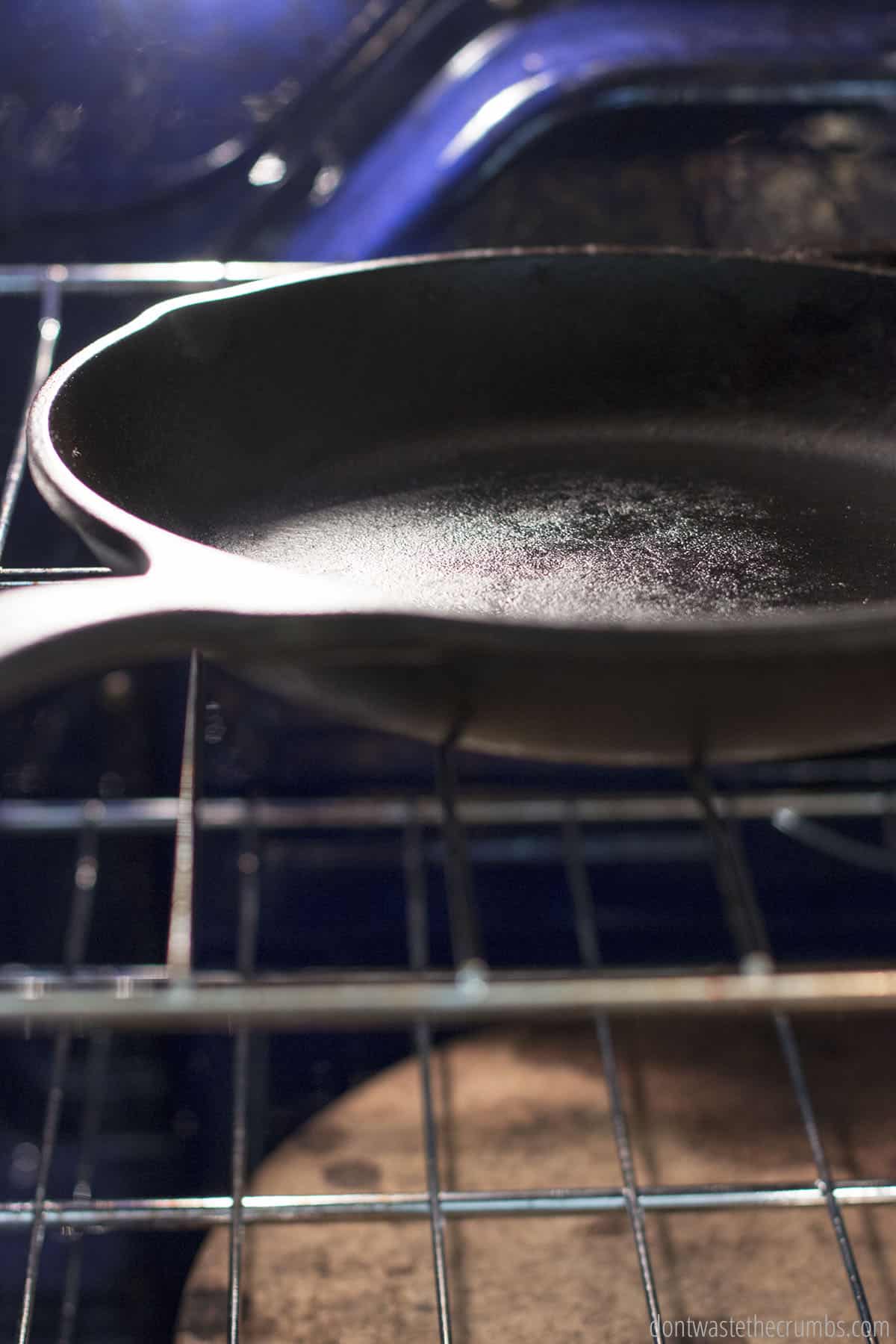
STEP 5. BAKE THE SKILLET AGAIN…AND AGAIN
Repeat steps 3 and 4 five more times, for a total of SIX rounds of greasing and baking. Think I’m crazy? I assure you I’m not and I have a very nicely seasoned cast iron skillet to prove it!
Why should I bake the skillet for six rounds?
The pores in cast iron are really, really small. Even the best greasers will miss some and only a thoroughly seasoned pan will create an awesome cooking surface. Going multiple times through the process means you will fully cover every inch of your new cast iron pan.
Luckily, most of the process for seasoning cast iron is hands-off, and you can even do it while baking something else at the same time!
Plus, the best method for seasoning cast iron is to build up thin layers of oil. Slathering too much oil on at once will give you a sticky pan.
HOW TO USE CAST IRON FOR COOKING
I prefer to add cooking oil or butter to my skillets before cooking. My cast iron is nonstick at this point, but the flavor of butter or bacon grease enhances whatever I’m cooking. I always add it before I cook anything anyway. This also helps preserve the seasoning you’ve already done.
Whether you add butter or oil before you cook is up to you, but if you’ve followed the steps above, you should have a nicely seasoned cast iron skillet on your hands!
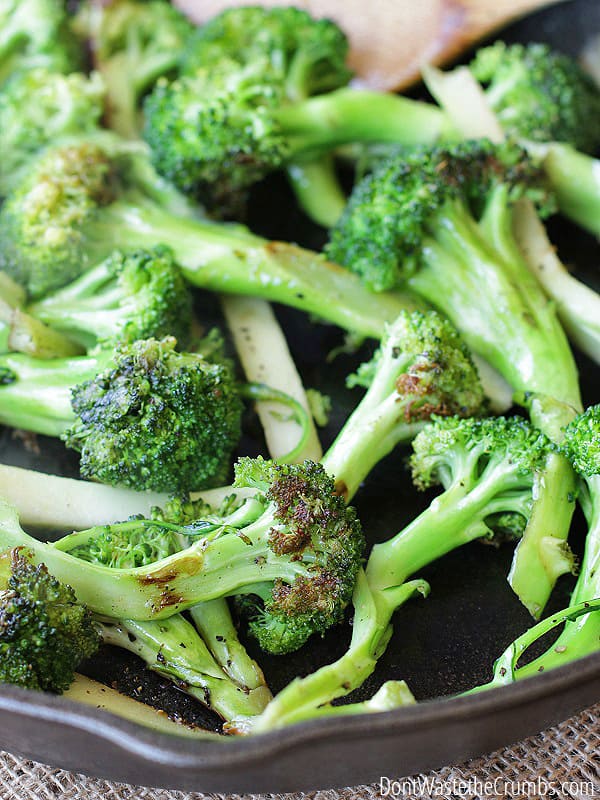
CLEANING CAST IRON
- After cooking, it’s best to clean the pan as soon as it’s cool enough to handle (cool, not cold). Then you can easily remove whatever is left in the pan.
- To clean a cast iron pan, simply wipe it out with a cloth or paper towel. That’s it!
- If you have any stubborn pieces of food left, you can scrub those out with a bit of warm water (no soap). If you do this, be sure you thoroughly dry the skillet on the stovetop as mentioned in step 2 above.
- Now, if you cooked something extra greasy, you might need a drop or two of dish soap. Some people say not to use dish soap, but I’m not one of them. Granted, you don’t want to use it EVERY time, but using it on occasion when the level of grease seems to be out of control is fine.
This last bit is entirely optional, but I like to add a wee bit of fat (½ teaspoon) to the pan as it dries on the stovetop. I’ll smear it over the bottom as soon as the pan is cool and let it absorb. I always do this if I have to use the dish soap. It’s a trick I learned from my stepmom (who has never steered me wrong in the kitchen).
Put the pan away when it’s completely cool and you’re done!
HOW SEASON CAST IRON FAQS
Why should I always dry my cast iron cookware?
You’re about to season your cast iron skillet with fat, and if you recall from science class, fat and water don’t mix. If your pan isn’t dry, it won’t absorb the fat and won’t create that awesome non-stick protective layer of seasoning we’re aiming for.
What is the best oil to season a cast iron skillet with?
Coconut oil, lard, tallow, or pure flax seed oil (not linseed) are your best options. Some people use spray vegetable oil, but you want to be sure that you use pure oil without any chemicals or additives in it. When you fill the pores of cast iron with fat, a nonstick sealant-type layer is created when the pan is heated. It’s this layer that turns a normal cast iron skillet into a nonstick cooking phenomenon!
What temperature do I use for seasoning cast iron?
Preheat the oven as high as you can (at least 400F). Then put the pan in the oven upside down on a rack. Set the timer for an hour and let the fat bake into the cast iron skillet. When the timer goes off, turn off the oven but leave the door closed with the pan still inside. You can also bake the skillet while you’re baking something else if the temperature is at least 400F!
How do I season a cast iron frying pan on the stovetop?
Some people opt for coating the cast iron skillet with a thin layer of oil and then heating it low and slow on the stovetop, but that can cause the fat to soak in unevenly, giving you spots on the pan that are not fully sealed with that layer of fat. Plus, you have to babysit the pan on the stovetop. Popping it in the oven is much easier and gives you more even coverage!
Do I need to repeat the process for seasoning cast iron again?
Over time, you may notice dry patches start to develop in your cast iron skillet, especially if you cook a lot of acidic foods like tomato sauce, which can eat away at the layers of fat you’ve baked into the pan. If that happens, re-season your skillet by oiling and baking it again to build that nonstick surface back up.
RECIPES FOR THE CAST IRON SKILLET
- Cast Iron Skillet Pizza
- Cast Iron Skillet Brownie
- Easy Pan Roasted Broccoli
- Cast Iron Skillet Cornbread
- Lemon Butter Asparagus
- Skillet Pizza Veggie Pasta
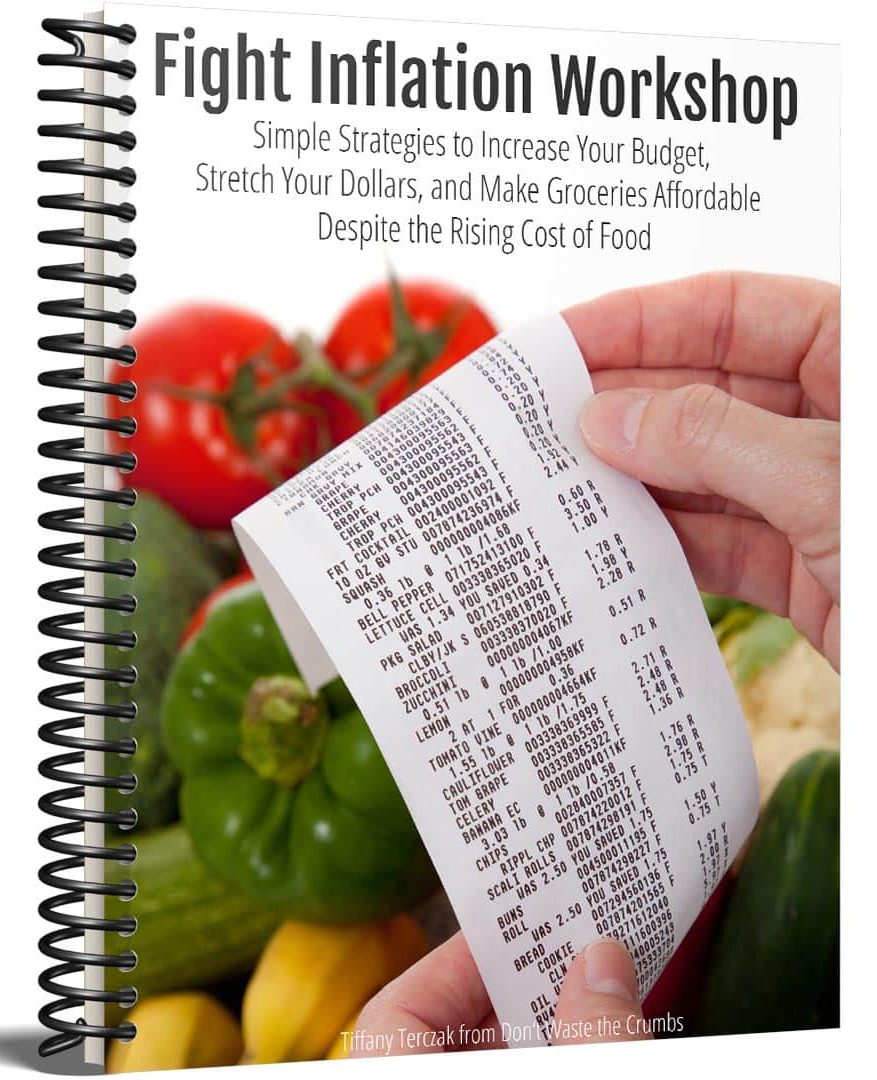

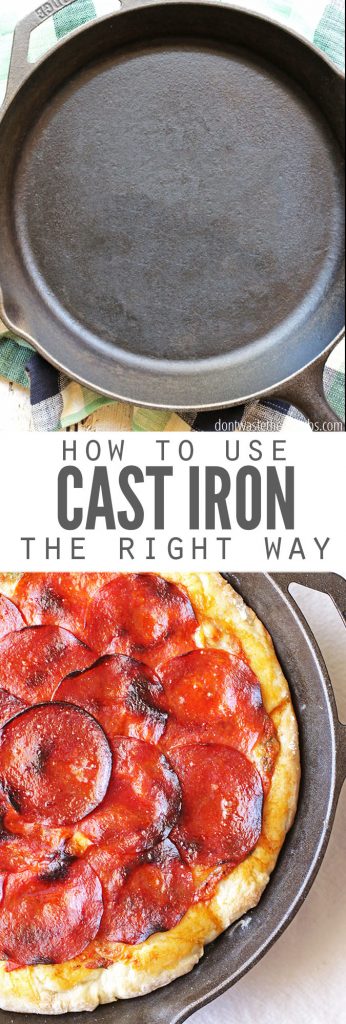
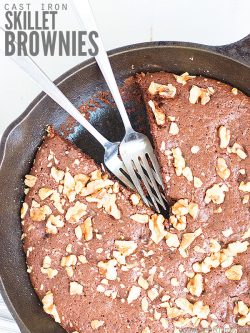
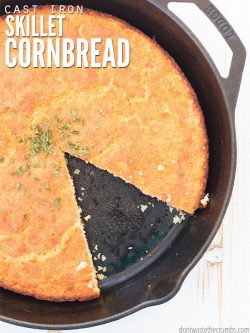
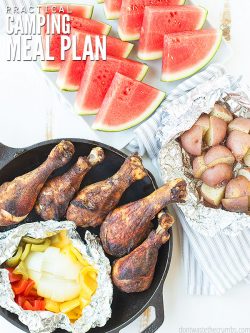
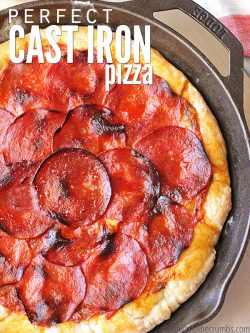

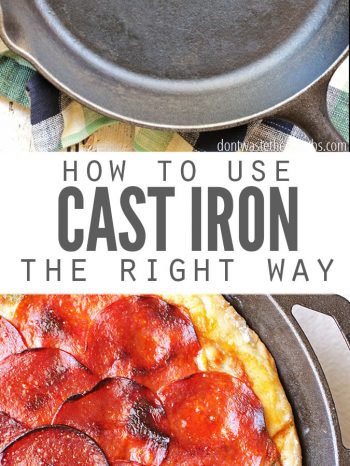
Hi, hope someone is still checking in, so I seasoned a brand new cast iron pan and just learned about the factory sealant. Do I have to strip everything and start over? Can I cook, even though the seasoning is on top of the sealant? Any short cuts will be so appreciated
One more question…does a properly seasoned skillet leave a “dirty” residue on a cloth (and even in food) when you wipe it down with oil? Or does that mean it isn’t properly seasoned?
Do not leave skillet to dry with any moister on the skillet. Always turn on a burner to dry the skillet for ten minutes. Never wash skillet in hot soapy water. Coat skillet with lard or coconut oil then wipe dry with paper towel. This will keep foods from sticking. After several times doing this the cloth will be less dirty. It takes time to get a well seasoned skillet. Six times and more coating, baking in oven, coating cycle, again, again, again… then food will stop sticking. Hope you good luck.
I’m curious…why do you put the pan in the oven upside down???
Janell, I was told the reason for this is that if there’s any excess oil, it’ll drip out.
I realize that this is an old post, but some of these comments amaze me. The best thing ever to cook with is cast iron. It can be used on induction, electric, gas, coal (if you have one), or even an open fire. People who have trouble with cast iron have not seasoned their pans correctly. Your instructions are perfect! I always-always use pure pork fat. (NOT Crisco-although Crisco is great for candles.) It is natural, it is affordable, and it withstands high temps. I made a major score at the local thrift store yesterday. I got a Lodge chicken fryer; yes that HUGE skillet- for $13. It has been abused but I have no doubt I can return this to its pristine glory. If you truly don’t want to spend the time to take care of cast iron then pass it on to someone who loves them!
Thanks for sharing Stealth Spaniel! They are great when well taken care of. 🙂
I was taught to heat the skillet, after using, then run under cold water {wiping with a scrubber}, then rinsing and heating till dry over med heat. I’ve been doing this almost 60 years.
You shouldn’t ever take a cast iron pan from hot to cold so maybe you meant let cool or not really heating too high? Drastic temperature changes that quick can crack cast iron.
I cracked my grandmothers 60 yr old cast iron skillet when i was a teenager by putting it in the sink and ran cold water in it when it was just turned off on the stove. she was not happy. As an adult now (44) i asked for her other cast iron skillets when she passed. Cast iron is absolutely the best.
I’ve been using cast iron since I began cooking. Love this hack with the little bit of extra info – while baking something else! Thanks.
The best way I found to use a new cast iron skillet is to season it 3 times to start. Then start cooking with it. If you get stuck on food just boil a cup or so of water in the skillet and wipe the skillet down with a sponge. The sponge being held by a spatula because the boiling water is to hot to hold on to the sponge directly. That is the easiest way to clean a new skillet that sticks. Then rinse and dry on the stove top. Once cool season it again place in over at 400 to 450° for 1 hour. You’ll do this a total of 3 times. So now you.have a skillet that has been seasoned 6 times and cooked in 3 times. After this you shouldn’t have food sticking and should be able to just rinse clean you skillet
Thanks for sharing your method, Ryan!
Do you do the six bakings in a row, or can they be done on consecutive days?
They can be done on consecutive days. You can even skip a couple if you forget, but don’t use the skillet until you’re completely done!
Thanks very mucu.
I knew some of this info but not all of and inherited a few skillets however purchased my own and only rubbed oil in it after washing first time. Neer baked it and never repeated it. I’ve used it a few times. Is it too late to do this? and also how often is this process repeated.
Hi Jennifer,
Nope, It’s not too late at all. You can repeat this process 2-3 times a year to keep your cast iron in the best shape. Hope this helps!
Thank you so much. I will clean it really good and season again. Have a great day!!!!
The reason your pan is sticky and gummy is because you applied to much oil when you put it in the oven. After you apply the oil to your pan you want to make sure you wipe all the excess off. So when you apply the oil wipe it totally down like you are wiping all the oil you just put on totally off. You only want a microscopic amount left on when you put it in the oven
I have a new cast iron skillet and did the seasoning process as above and now the sides of the skillet are sticky and gummy. What did I do wrong and how doe I clean it off?
Hi Cindy! Your skillet shouldn’t be sticky and gummy… I’m not sure why that would be the case, but I’d wipe off any excess oil really well, put it in the oven per the article and let it thoroughly dry. If it’s still sticky and gummy, then I’d suggest cleaning it with a gritty sponge.
I was using oil like you said then a friend said she used Crisco Shortening so then I started using that. Do you think that may have caused the sticky stuff? I can scrape it with my finger nail.
Possibly – Crisco is pure hydrogenated oils and I would never recommend cooking with that. If I were you, I’d scrub the pan well (on the areas you used Crisco) using dish soap and a gritty sponge and use the method I wrote above. 🙂
I’ve tried seasoning my plans this way but it takes a loooong time and I never get it do win one day. When you season it, does it normally take two days? Do you do one coat a day until it’s finished?
Hi Heather – I typically do this process over the course of 2-4 days because it’s easier to leave it in the oven overnight. So I’ll season + bake when I’m cooking dinner, then let it stay in there to cool off. Repeat, repeat, repeat. And more repeat if you can! Essentially, I give myself 5-10 days of still using other pans before using a cast iron skillet. It’s better to do it right the first time, then go through the hassle of stuck-on foods and re-doing the process later. 🙂
Do you have to re-season you pans after they were done the first time?
Hello Diane!
For cast iron skillets, you should season it again whenever you see dull spots. Or you can season it whenever it’s out and your oven is on. Hope this helps! 🙂
I have a 16″ large cast iron skillet and a 11″ x 14″ baking dish I got for $40 of a couple on a swap page. I really want to make perfect hashbrowns and according to my research that’s the only way to get them is in a cast iron or non stick skillet. I decided that I don’t want the toxins from the non stick and all my cook ware is stainless steel… 🙁 . I haven’t seasoned my skillet yet but really want those perfect hashbrowns . Thank you for posting this !! Its super easy ! In my head it was more complicated for some odd reason.
I bought a lodge cast iron frying pan last week.
My husband seasoned it and used the pan for the first and I can’t get the baked on sauce off the pan.
I have tried cleaning it with salt , also tried rehearing the pan with water , also tried soap and it won’t come off .
Any sujggestions on cleaning this ?
A ball of steel wool can do it Dawn. 🙂
Nothing wrong with my stove top if you google heat conduction you will see for yoreself that stainless steal WILL conduct heat far more evenling than iron !!!!!!!
If you want to use iron in the oven or a small item on the stove top that will fit within the rings the this is great but if you want to make wraps, tortillas,pancakes etc FORGET IT CAST IRON WILL NOT HEAT EVENLING AND YOU WILL BURN THE CENTER ! This is NOT because you have a “cheep stove” as some fanatics who can not bare to hear a bad word said against their beloved cast iron IT IS FACT GOOGLE THE FACTS YOURSELF !!!!!!!!
I got a cast iron skillet for Christmas this year. It said it was pre seasoned so I washed it with warm soapy water, dried it and then using a paper towel to coat it with some veggie oil-its what the package said. I used my skillet to make pulled pork tacos and there is some sticking. I am not sure how to get it off. I know i am not supposed to scour the pan so what else can i do?
Hi Jillian – clean the pan as best as you can (using soap and scrubbing if you need to) and then season it using the directions in this post. Pre-seasoning usually doesn’t do the trick, but this method does!
Can you use mineral oil after you clean your pan?
I wouldn’t put anything on my pan that I don’t eat, and I don’t eat mineral oil Elizabeth 😉 I’d recommend coconut oil b/c it’s good for higher temps and you can eat it. Palm oil would be another good one.
I use nothing but Crisco after I wash my skillet with very hot water and dry it. Then I set it on a stove burner, turn it up to high and as soon as the grease starts melting I turn the heat off and let it return back to room temperature.
I see so many recipes for more than just meats….pies, brownies, veggies…Do you just cook/bake these items in the same pan that meats were cooked in? Is there no flavor carryover to the desserts or any food for that matter? I’m just thinking that if you cook, for example, bacon and eggs, wipe clean and then bake a pie, won’t your pie taste like bacon?
Thanks!
Very nice easy to follow post. I am glad you have discovered cast iron and did not give up after that first time. I have been cooking on cast iron for over a decade now and I have a slight addiction to it. I don’t own anything else actually. I have 15 skillets of different shapes, sizes, and weights that I use fairly regularly and am always looking to add more. I love to “rescue” my cast iron from those who neglect them and sell them at garage sales and flea markets, the more beat up the better, I love the challenge of bringing them back to life.
Dish soap you say???? Gasp, cringe, argh…how dare you. Just kidding, I have heard that some people do this and it is just fine in moderating and just a drop will go a long way. Personally though, I never ever ever ever ever ever wash my cast iron with soap, because that is what my grandpa told me not to do and well I never was one to not listen to grandpa. Some boiling water always does the trick and a nice light coating of Crisco is my greasy coating of choice, unless I am going to be using it again that same day I like to then use some bacon grease, it just seems to add a little extra something to the magic of it all.
Well thank you for the great post, I have pinned it and saved it to Facebook.
The Broke Dad
When you rescue rusty pans how do you get the rust off?
Hi Jenny, Use a 50/50 vinegar water solution and then a lot of scrubbing and elbow grease with a steel wool to get it off and then immediately season it. Best of luck!
I have been using cast iron for roughly 58 years. Mom and her mom got me started. I love cooking with it the most. Some of my skillets are hand-me-downs and I’ve got three that I bought from Lodge. (Won’t buy anything else.) For cleaning my pans the very first time, I use a little gentle dish soap and hot water. I’ve got a bamboo scrubber that’s made for cleaning woks. The hot water helps to warm the pan for seasoning when it’s dry. I dry the skillet after it’s been washed with either paper towels or a soft dish towel. I then place the skillet on the stove with the burner on medium. This helps to make sure it’s really dry and opens the pores in the cast iron. I always use “Crisco” to season my cast iron. It doesn’t take much Crisco to coat the skillet. Just enough to make it shine. I leave it on the burner which I’ve turned on and let it cool. Wipe the excess grease out with a paper towel and it’s ready for it’s next use. After each time I use it, it gets washed with HOT water and the bamboo scrubber and gets seasoned. The only time I ever use any soap is when I first get them. Sometimes it takes a little elbow grease to remove anything that may stick. I’ve been using some of my skillets for many years and have never had a problem with them.